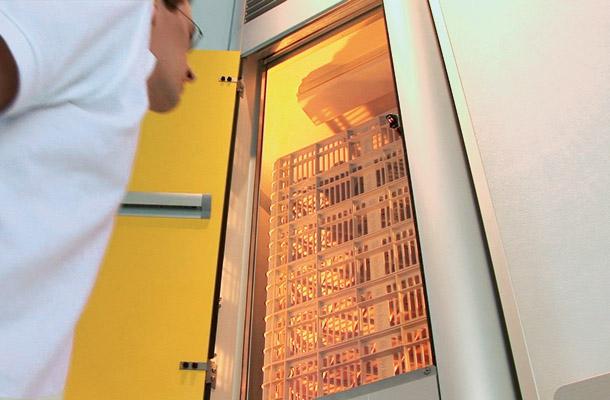Fresh Air: a prerequisite for life!
Tags: Climate control | Blog
, June 9 2010

Earlier this year I visited a hatchery that has expanded to its current size since Pas Reform installed our first Smart™ machines three years ago. A new hatchery manager, well educated but lacking practical experience, had recently been appointed, with ample time for his predecessor to pass on his skills.
It appeared from the records that results were well above standard initially. Yet gradually, as the hatchery expanded, the situation had deteriorated. In the setter room, the climate felt so unpleasant that I even developed a headache. In the hatcher room, the hatchery manager showed me some hatcher climate history graphs. Relative humidity raised spontaneously as the chicks started to hatch, but after reaching a peak of 70–75% it did not drop again, even with the in- and outlet valves opened almost completely.
Suspecting that the problem was caused by the air supply to the machines, I asked to see the air handling unit. This was supposed to supply fresh, pre-conditioned air to the entire hatchery, as well as maintaining recommended pressure set points in the various rooms, by pressure controlled dampers. To my surprise, air pressure in the air preparation room was set to only 15 Pa instead of the recommended 35 Pa. It looked like this set point had never been changed since being set up for the hatchery running at minimum capacity, when this had provided sufficient air. However with the hatchery now running at expanded capacity, this was no longer the case. Upon increasing the set point, the air handling unit could still barely raise the pressure. On opening the unit, the reason for this was clear; the filters were totally clogged up. Luckily a spare set of filters was available on site - and after replacing them, we rapidly achieved recommended pressure.
The control boxes for the dampers were all turned to "manual". Again, this probably sufficed originally, but I convinced the hatchery manager to turn them all to "automatic", to ensure constant pressures in all the rooms, independent of air demand to the incubators - and also necessary to provide good climatic conditions on hatch days during chick processing.
Now that the air supply was being controlled properly, the machines started to respond as would normally be expected. These simple but essential recommendations not only raised hatchery results, but also the confidence – and performance - of the new hatchery manager.